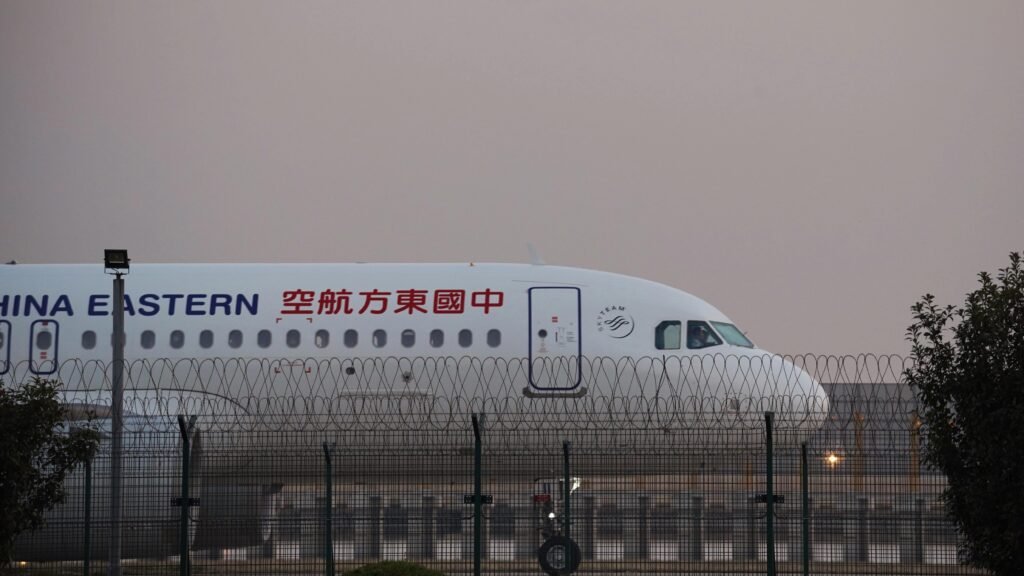Table of Contents
The Long-Awaited Reunion of Skies
For thousands of students, business travelers, and families, the air route between India and China has been more than just a convenience—it has been a bridge between two of Asia’s largest cultures. When direct flights were suspended in early 2020, a five-hour trip stretched into a day-long odyssey through multiple connections. Uncertainty clouded plans, raising costs and tempers, and many wondered if the friendly skies would ever return.
Now, after five years of separation shaped by pandemic, politics, and diplomatic unease, the skies are finally set to reopen. This is more than aviation news. It is a story about healing, adaptation, and the hope that even nations with differences can find reasons to connect.
What Grounded India-China Flights

The abrupt halt to direct flights between India and China in 2020 followed swiftly after border tensions and public health emergencies escalated. The pandemic triggered strict travel bans, but it was the clash in Galwan Valley that made any dialogue about restoring air traffic more complicated. Airlines on both sides pulled out as relations chilled and paperwork piled up.
For travelers, especially students hoping to return to Chinese universities and entrepreneurs managing factories and supply chains, the disruption brought challenges that sometimes felt insurmountable. Relying on connecting flights through hubs like Singapore, Bangkok, or Hong Kong became the norm, often tripling travel times and costs.
A Diplomatic Thaw Changes the Flight Path
By 2025, signs of reconciliation began to flicker. Chinese Foreign Minister Wang Yi’s visit to New Delhi triggered renewed talks. Amidst cautious handshakes and optimism, both governments agreed not only to resume direct flights, but also to update their long-stalled Air Services Agreement. Visas were to be simplified for students, business travelers, and tourists.
In essence, reopening the skies stood as a quiet vote of confidence. While there are still concerns and conditions—such as regulatory and safety checks, confirmation from both sides’ authorities, and ongoing dialogue about border issues—the move represents a careful rekindling of the India-China relationship.
Airlines Prepare for Takeoff, but Caution Abounds
Airlines moved quickly in response to announcements. Chinese carriers like Air China, China Eastern, and China Southern applied for slots at Delhi and Mumbai airports. Indian airlines, led by Air India and IndiGo, prepared to relaunch their popular routes connecting cities such as Chengdu, Guangzhou, Beijing, and Shanghai.
But before the first flight boards, both countries must finalize clearances and ensure all safety benchmarks are met. Indian carriers, having lost their slots after years of inactivity, are navigating a slew of regulatory processes, airport validations, and pilot requalification. The tentative timeline aligns with winter 2025, but flexibility remains the watchword. Unexpected delays—technical, diplomatic, or regulatory—are always possible.
Routes, Frequencies, and Who Benefits Most
Before the historic suspension, over a dozen direct routes connected India and China. New Delhi and Mumbai linked cities like Beijing, Shanghai, Guangzhou, and Chengdu. These flights served more than 1.25 million passengers annually, facilitating critical exchanges for work, study, and family reunions.
Industry analysts expect priority routes, such as Delhi–Beijing and Delhi–Shanghai, to restart first, with expansion to Guangzhou and Chengdu as demand grows. While frequencies may begin modestly, projections show steady growth as confidence, business, and curiosity rebound.
For students, this is a lifeline. Affordable, direct travel will make it possible to return to campuses and create new opportunities for research and learning. For business travelers, faster access could make supply chains and meetings more competitive and resilient. Families separated by years will finally be able to visit loved ones without arduous detours.
Conditions and New Realities
Though the barriers are dropping, conditions still apply. The resumption of direct flights hinges on ongoing regulatory approvals, which depend on security assessments and diplomatic understandings. Both governments must agree not just on slots, but also on visa processes, health protocols, and border trade arrangements.
This is not unconditional. The shadow of past challenges—closed borders, regulatory hurdles, and fluctuating sentiment—reminds travelers and airlines to remain alert. Pilgrimage routes for spiritual travelers, like the journeys to Mount Kailash and Lake Manasarovar, are slated to resume in phases. Meanwhile, trade through the Himalayan passes is also being restored.
The roadmap is prudent rather than exuberant, but signs are hopeful. Cooperation in aviation often signals broader engagement, and officials appear eager to keep channels open even in turbulent times.
The Human Side of the Journey
Every airline ticket, every scheduled flight, represents a tapestry of dreams and personal stories. Students separated from campuses and friends, businesses forced to reinvent supply strategies, families divided by years of uncertainty—all see hope soar anew.
Travel agents in Delhi and Mumbai report inquiries surging, not only for flights but for reunions and new ventures. Social media buzzes with stories of people planning long-awaited return journeys to see loved ones, resume work, or pursue academic ambitions.
The human impact of resumed flights cannot be understated. Reduced costs, shorter journey times, and newfound ease promise countless life improvements. And beyond the dollars and logistics, there’s a sense of psychological repair—a belief that the world can become smaller, friendlier, and more accessible again.
Economic Implications of Reconnected Skies
India and China, two economic titans, have always benefited from robust people-to-people connectivity. Direct flights encourage trade, tourism, investment, and collaboration across industries. Airlines on both sides are poised to re-enter a lucrative market, reclaim lost ground, and offer more competitive fares.
As flights resume, supply chains may grow more reliable. Smoother exchanges will favor both small entrepreneurs and multinational conglomerates. Academic partnerships and technological innovation could flourish, sparking projects that benefit both nations and beyond.
Tourism sectors anticipate a comeback, with travel professionals expecting new bookings for cultural, educational, and spiritual journeys. Local economies near major airports will see increased activity, supporting hospitality, retail, and ground transportation.
Navigating Challenges: Security, Policy, and Trust
The decision to reopen direct flight routes was not made lightly. Security, safety, and border management remain a top priority after recent history’s painful lessons. Both countries have outlined frameworks to manage any escalation and keep dialogue channels open through diplomatic and military contacts.
Long-term normalization depends on continuing trust and proactive problem solving. If regulatory, safety, or diplomatic challenges resurface, the foundations now being laid will help maintain progress and prevent abrupt disruptions.
Looking Forward: Flight Paths to a Brighter Future
As India and China step onto the runway once again, optimism mixes with realism. The diplomatic overtures, regulatory coordination, and readiness from airlines signal that both societies want richer connection, smoother collaboration, and firmer foundations for growth.
For travelers—students hungry for education, business leaders seeking opportunity, and families longing to reunite—the prospect of direct flights is an invitation to dream bigger. The future holds the promise of more convenient travel, lower fares, and increased cultural exchange.
If the skies remain open, the ripple effects could inspire renewed hope, prosperity, and friendship, proving that sometimes, positive change does come from careful, patient engagement after even the deepest divides.
Conclusion: Where Connection Is a Human Story
In reopening direct flights between India and China, governments are not just enabling journeys—they are rekindling relationships, opportunities, and shared hope. This milestone marks more than a victory for airlines; it is a testament to the resilience and optimism of people who never stopped believing in the possibility of connection.
The process may require patience, and new conditions may shape the way forward, but as planes take to the air once more, the unfolding story is not merely about economics or logistics. It is about people, families, aspirations, and the beautiful uncertainty of reaching out and moving forward together.
Read More: China’s Property Giant Collapses: Lessons for a Stronger, Brighter Future











Leave a comment